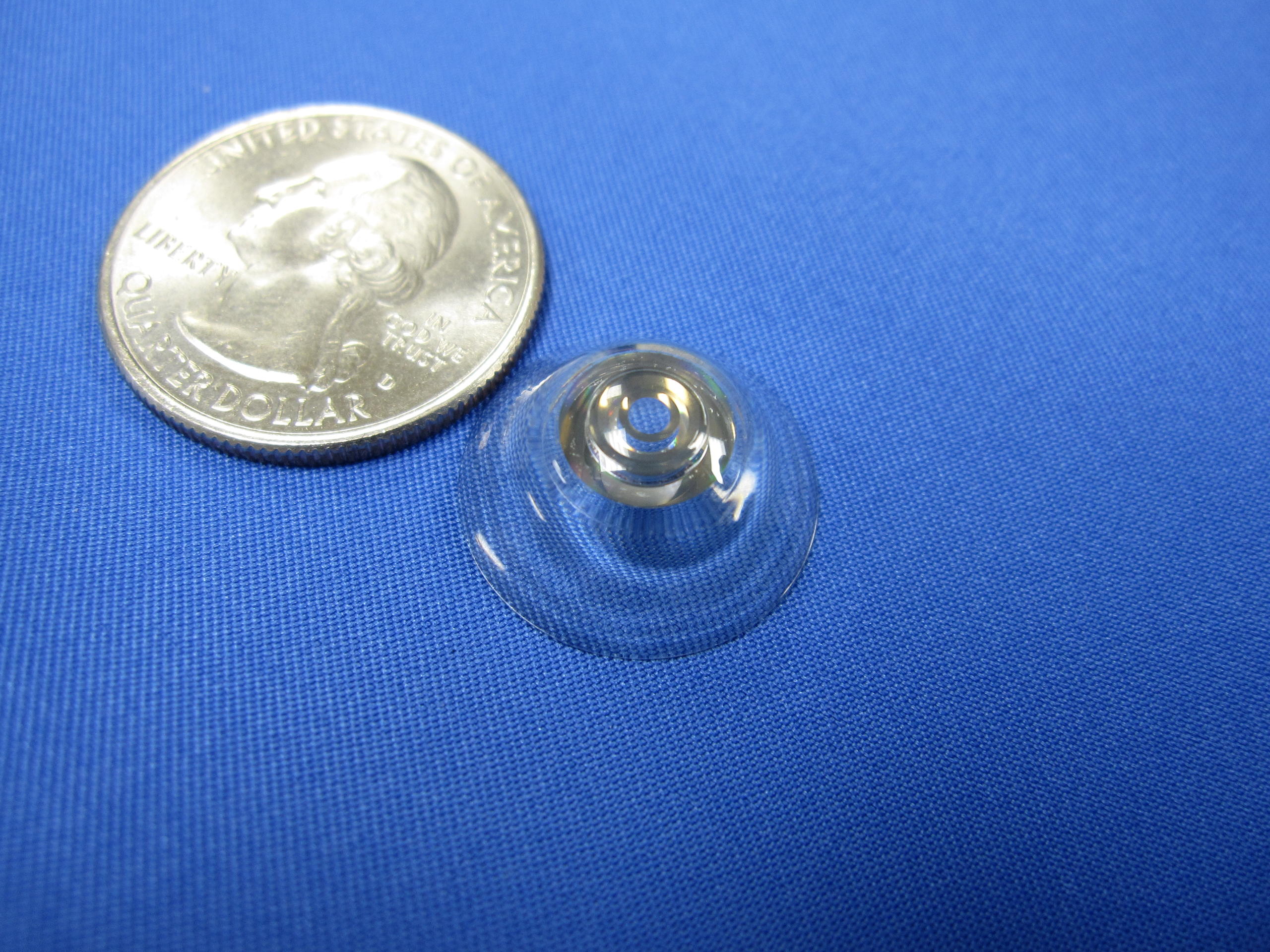A special relationship: The US military and Swiss universities

From aerial surveillance cameras to autonomous reconnaissance drones: Swiss universities are participating in projects funded by the US military. What are the guidelines when it comes to such sensitive collaboration?
Argus Panoptes is a giant in Greek mythology who has a hundred eyes. He was tasked by the Goddess Hera to guard her priestess Io from being seduced by Zeus. The hundred-eyed Argus is ideally suited to keep watch on Io. No wonder that the US Defense Advanced Research Projects Agency (DARPA) named its first gigapixel (one billion pixels) surveillance camera project ARGUS-IS (Autonomous Real-Time Ground Ubiquitous Surveillance Imaging System).
Meant to be mounted on drones, the cameras could scan an area half the size of Manhattan and track moving vehicles and people. It was first tested in 2010 and operationalised in 2014.
At around the same time (2011-12) the Swiss Federal Institute of Technology in Lausanne (EPFL) was working on a DARPA-funded project called Knowledge enhanced exapixel imaging (KEEP)External link. The objective was to come up with new techniques for super-resolution image compression. Back then, compressing huge pictures required tremendous computing power. The KEEP project worked on using mathematics and machine learning to find new ways of compressing images that required less computing power.
“The research led at EPFL had no direct application in scope, since it was very fundamental work. The team aimed at demonstrating theoretically if a 100x compression ratio could be achieved in such gigapixels images,” a spokesperson for EPFL told swissinfo.ch.
The ARGUS-IS gigapixel cameras were designed for drones and it is believed that they have been incorporated into the newer version of “Gorgon Stare pods” observed on MQ9 Reaper drones. These are the first “hunter-killer” drones deployed the US Air Force and are equipped with 500-pound bombs and Hellfire missiles.
Is it possible that these potentially lethal machines are armed with gigapixel cameras that process images with the help of EPFL research? EPFL isn’t certain that its KEEP project is connected to ARGUS-IS in any way.
“We do not have any information on that. That work and its funding was rather most probably part of the fundamental research efforts led by the US as well as any other army, and not directly connected to a specific project such as this one,” says EPFL.
In other words, there is no way of knowing if the US military actually used EPFL research to track and kill enemies with MQ9 Reaper drones. DARPA did not reply to a swissinfo.ch request asking if the Swiss research was used in the development of ARGUS-IS.
Ethical guidelines
Swiss regulations require researchers working on such topics to get authorisation from the State Secretariat for Economic Affairs (SECO). The Swiss Federal Act on the Control of Dual-Use Goods, Specific Military Goods and Strategic Goods also covers export of technology, software and information that can have potential military uses.
However, a loophole exists that helps universities avoid the cumbersome process of obtaining authorisation for collaborations with DARPA: Export controls do not apply to “basic scientific research”.
“According to annex 1 of the Swiss Goods Control Ordinance and based on the guidelines of the international export control regimes, export controls do not apply to technology in the public domain, to basic scientific research or to the minimum necessary information for patent applications,” a SECO representative told swissinfo.ch.
The term “basic scientific research” fits almost all DARPA-funded projects allowing researchers to circumvent regulations on the export of technology.

Do researchers have any say or responsibility when it comes to working on so-called “dual-use” (civil and military applications) projects? EPFL’s guidelinesExternal link let scientists off the hook on this question.
“Individual scientists/engineers should not take upon themselves the entire responsibility of deciding whether or not to engage in military defence research or in joint military-civilian programs,” say the guidelines.
The issue is framed as a research policy question that is the remit of a range of stakeholders beyond just universities like the scientific community, government and civil society. However, apart from the subject of export of weapons, there has been little public debate on the subject from a research collaboration point of view.
Sensitive projects
The gigapixel camera-relevant research is not the only DARPA-funded project carried out by EPFL. Researchers at the Laboratory of Applied Photonic Devices have developed a prototype telescope contact lensExternal link that offers magnified vision to the wearer. It is billed as a promising aid for those suffering from age-related vision loss. However, it is not clear why DARPA would be interested in funding such a project.
The Idiap research institute in Martigny, which is affiliated to EPFL, has worked on a DARPA projectExternal link called “Media Forensics” that focused on detecting manipulation of audio and video sources. It has discontinued collaboration with DARPA for fear of attracting controversy.
“Although quite active in the past, even as coordinator, Idiap is currently no longer involved in such (quite unstable and politically-sensitive) projects,” states the institute’s research programme for 2017 to 2020.
EPFL’s Photonics and Quantum Measurements lab (K-lab) has also worked on a DARPA project to develop tiny, high power-efficiency micro-photonic chipsExternal link with applications for data centres in telecommunications.
And it is not just EPFL that is a DARPA research partner. The Quantum Optoelectrics GroupExternal link of Zurich’s Federal Institute of technology (ETHZ) has worked for DARPA’s SCOUT programmeExternal link that researches techniques to rapidly identify chemical and biological agents in real-life settings.
Another DARPA-funded Zurich project is one by the University of Zurich’s Institute of NeuroinformaticsExternal link. They received funding to work on DARPA’s Fast Lightweight Autonomy (FLA) programmeExternal link to help in the development of small autonomous drones. These drones are meant for rescue but also for potential military operations like “safely and quickly scanning for threats inside a building before military teams enter”.
Close relationship
The relationship between Swiss universities and DARPA is more than just isolated projects in sensitive domains. Researchers are encouraged to take part in competitions and challengesExternal link funded by DARPA. DARPA managers are also invited to Swiss universities to give talks and are also occasionally invited to research workshops to help show what Swiss research has to offer. For example, in 2014, DARPA managers were invited to a four-day research workshop organised by EPFL in the lakeside Swiss town of Ascona.
“In addition the workshop was visited by leading program managers from the ESA [European Space Agency] as well as the DARPA agency. Therefore the workshop provided an opportunity to showcase the research in this field to leading program managers,” says the workshop report.
Collaboration with DARPA has also given wings to the idea of a Swiss academic-corporate-military entity. One of three interactive workshops organised on Swiss Cybersecurity DayExternal link in 2017 was entitled “Towards a Swiss DARPA”. Panel members – including former US National Security Agency (NSA) senior staffer Curtis DukesExternal link – spoke on the need to channel Switzerland’s “academic superpower”, “strong private sector” and “militia army” for a national cybersecurity strategy.

In compliance with the JTI standards
More: SWI swissinfo.ch certified by the Journalism Trust Initiative














You can find an overview of ongoing debates with our journalists here . Please join us!
If you want to start a conversation about a topic raised in this article or want to report factual errors, email us at english@swissinfo.ch.